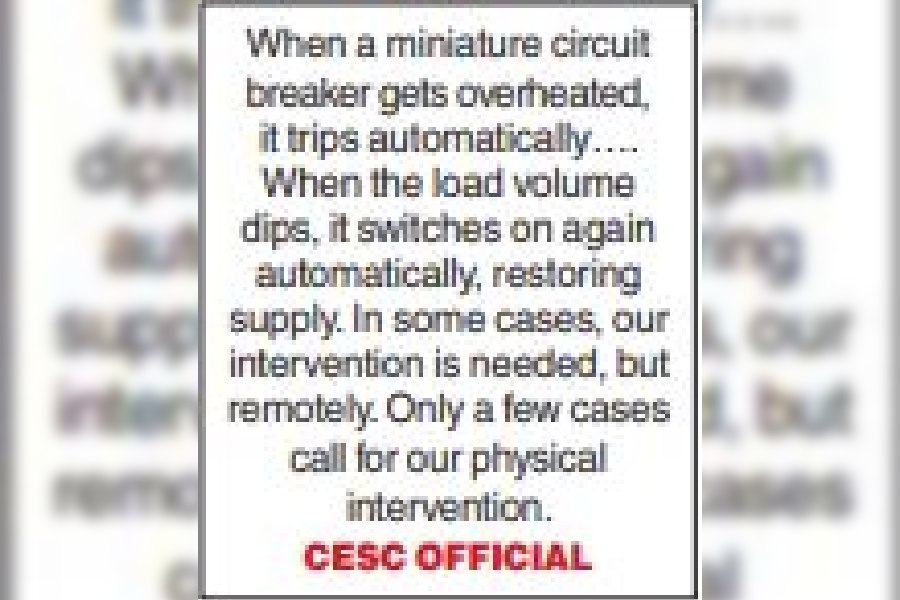Frequent power outages plagued the city for several days at least till Friday’s showers. This was the second such phase, after one in late April.
The Telegraph spoke to CESC officials and independent engineers to find out the reason for the outages and the most affected areas.
Why were the outages happening?
- “Use of appliances beyond the sanctioned load” was the stock answer of CESC. Appliances mean air-conditioners.
- In many pockets, families have installed two ACs though the electric meter can support one. “As use of ACs has risen manifold because of the blistering heat, the chances of power tripping have gone up, too,” said an official.
How does power trip?
- A miniature circuit breaker (MCB), an appliance used to switch off an electrical circuit during an unnatural situation which can damage the system, trips during overload.
- “Overloading is an unnatural situation. It is a major reason behind the tripping of power in a circuit. A circuit breaker trips if there is an attempt to draw more power than it is intended to carry,” said an electrical engineer not associated with CESC.
- Use of excessive appliances whose load is beyond the sanctioned load of a consumer’s meter can lead to tripping of the power supply to the home, said CESC officials. Several people doing the same in a neighbourhood can trip the power of the entire area.
- CESC officials said the tripping mechanism “is inherent in the electrical system to avert a possible larger damage”.

Affected areas
- Most of the complaints during the latest surge in power outages came from Behala, Thakurpukur, Ekbalpore, Dum Dum, Paikpara, and Cossipore, based on police reports and social media posts.
- A CESC official said: “Behala and Dum Dum are vast areas. Only some parts of these areas have been affected. We are unaware of multiple complaints from Paikpara and Cossipore.”Damage control
- Scores of CESC vans and generator sets were spotted across the city. But CESC officials said the vans were not always headed to an affected area. “They are patrolling vans. Around 250 such vans are crisscrossing the city, looking for areas without power,” he said.
- Overloading can trip a system at multiple levels — in a home, a distribution box or a transformer. A transformer usually caters to around 400 domestic connections, saidofficials.
- Let us assume power returns to a home after a gap of an hour. Many people would think that CESC men and machines were at work for some of that time, rectifying the snag and bringing power back.
CESC officials said that was not the case all the time, especially during outages.
“When an MCB gets overheated, it trips automatically. After a cooling period, when the load volume dips, it switches on again automatically, restoring supply. In some cases, our intervention is needed but remotely. Only a few cases call for our physical intervention. But even then, there is no such extensive repair job. When the load dips, the power is restored. We have to just facilitate that,” said an official.
Night demand soars
- The demand usually peaks between 3pm and 4pm, said CESC officials. On Friday, the peak demand was 2,386MW. On Thursday and Wednesday, the peak demands were 2,467MW and 2,442MW, respectively. In comparison, during last year’s Durga Puja, the maximum power consumed in a day in the city was 1,969MW. The peak demand on Saturday dipped because of Friday’s rain.
- The latest heat spell pushed up the night demand as well, said CESC engineers. The average daily peak night demand was 2,265MW between June 1 and 7. During the corresponding period last year, the figure was 1,940MW.
- The majority of outage complaints this newspaper came across were reported at night. A CESC official said “power will trip whenever there is overload, afternoon or night”.
